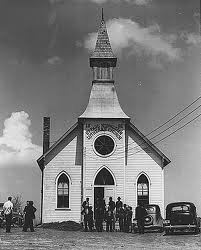
Oregon Church records definitely are a exceptional resource for the genealogical and historical researcher. In many parts of Oregon, church records predate civil records. They consequently record vital events, giving birth, marriage, and death information that could otherwise be lost. Aside from offering names and dates, church records may uncover associations between people and depict a family’s position in the community. In addition, entries of a personal nature are not uncommon, and these could offer a glimpse into an ancestor’s character or habits.
Well before Oregon County and city governments stored vital records, many people recorded very important dates, events, and names in their family Bible. Family Bibles are helpful research resources. Although the dates may not be guaranteed, Family Bibles are a tangible link with past generations.
Prior to 1900, the Roman Catholic, Presbyterian, Christian Church, Methodist, and Episcopalian groups were the largest denominations in the area. The original churches still hold most of those records, but some are located in a central archive for the given denomination, instead.
The Willamette Valley, which was located in Marion County, was first settled by Methodist missionaries in 1834. The Willamette University in Salem, Mark O. Hatfield Library has some Methodist records on file, but many vital records from the Methodist missions of the time are missing or incomplete.
Marcus Whitman led the establishment of the Presbyterian Church at Walla Walla in 1836. At the time, Walla Walla was part of Oregon, although it is now located in Washington. William H. Gray’s home at Clatsop Plains was the first Presbyterian church established on land that is actually part of what is now Oregon. It was located between Seaside and Astoria and began services in 1846.
An Oregon Presbyterian Church WPA inventory is available at the Oregon State Library. The Philadelphia Presbyterian Historical Society has indexed that inventory. Churches mentioned include those affiliated with the following: Presbyterian Church in the United States, United Presbyterian Church of North America, Cumberland Presbyterian Church, Reformed Presbyterian Church.
Researchers should note that the records are incomplete, but do contain useful information. Inventories consisted of questionnaires, which listed the date of the organization of the congregation, and records available for that congregation, but only congregations in 11 of the counties in the state were covered. There were 4 indexes made by the Presbyterian Historical Society. One was organized by place name, one by county name, one by date organized, and one by the name of the church itself. The FHL has microfilmed copies available of both the inventories themselves and the indexes for them.
Rev. St. Michael Fackler came to the Oregon City area in 1847 and became the first permanent Episcopalian minister in the area. A Diocese of Eastern Oregon historian gathered those records, which are at the Oregon State Library on microfilm. Also located there are baptism records from 1873 to 1956, which are listed in the catalog called the “Oregon Collection.”
The archives of the Episcopal Diocese of Oregon features records from 1841 onward, which include bishop diaries, as well as defunct parish records.
Before the Civil War began, Quakers arrived in the Oregon region. They settled at Ashland in the early 1850s, establishing the first Friends Sunday School. However, as Quaker families were scattered throughout the region, community meetings were not held until about 20 years later, in the 1870s. After that time, many Quakers quickly moved to the area and, in 1893, they began holding annual meetings. There were several types of Quakers, but mot of the early ones who settled in Oregon were known as Orthodox, Gurneyite Quakers. As of 1890, there were just a little less than 1,000 practicing Quakers in the area. The George Fox University is home to a Quaker record repository.
In 1838, two Catholic priests came to Oregon from Quebec. They created a mission to the north of Salem, at St. Paul. Fur trappers with Hudson Bay had a settlement in that area, which was known as French Prairie. The Archdiocese of Portland in Oregon Archives and the Diocese of Baker have Catholic record repositories.
The Mormons were widely opposed when they first came to Oregon, which was in 1857. So, Mormon missionaries were not established until much later. For example, one was established in Sumter Valley in 1890, when the Oregon Lumber Company started operating in that area. Many people also came to the area in 1897, when the Amalgamated Sugar Factory was built. So, there is a large Mormon population in Malheur County, even in the present day. The Church of Jesus Christ of Latter-day Saints is one of the largest religious groups in present-day Oregon. The FHL has Church of Jesus Christ of Latter-day Saints mission, ward, and branch records on file.
Lutheran records and historical documents can be found at the Lutheran Church Missouri Synod, Northwest District
In 1858, Portland became home to the first Jewish synagogue in Oregon, the Congregation Beth Israel. In 1911 the Congregation Ahavath Achim was opened in Portland as well. It was made up of Sephardic Jews from the Island of Rhodes and from Turkey.
The Jewish Historical Society of Oregon archives is located at the Oregon Jewish Museum. Included in that collection are Hebrew school records, synagogue records, interview transcripts, photographs, record books, and other documents.
Oregon Church and Bible Links
- Oregon Church Books (amazon.com)
- Oregon Bible Books (amazon.com)
